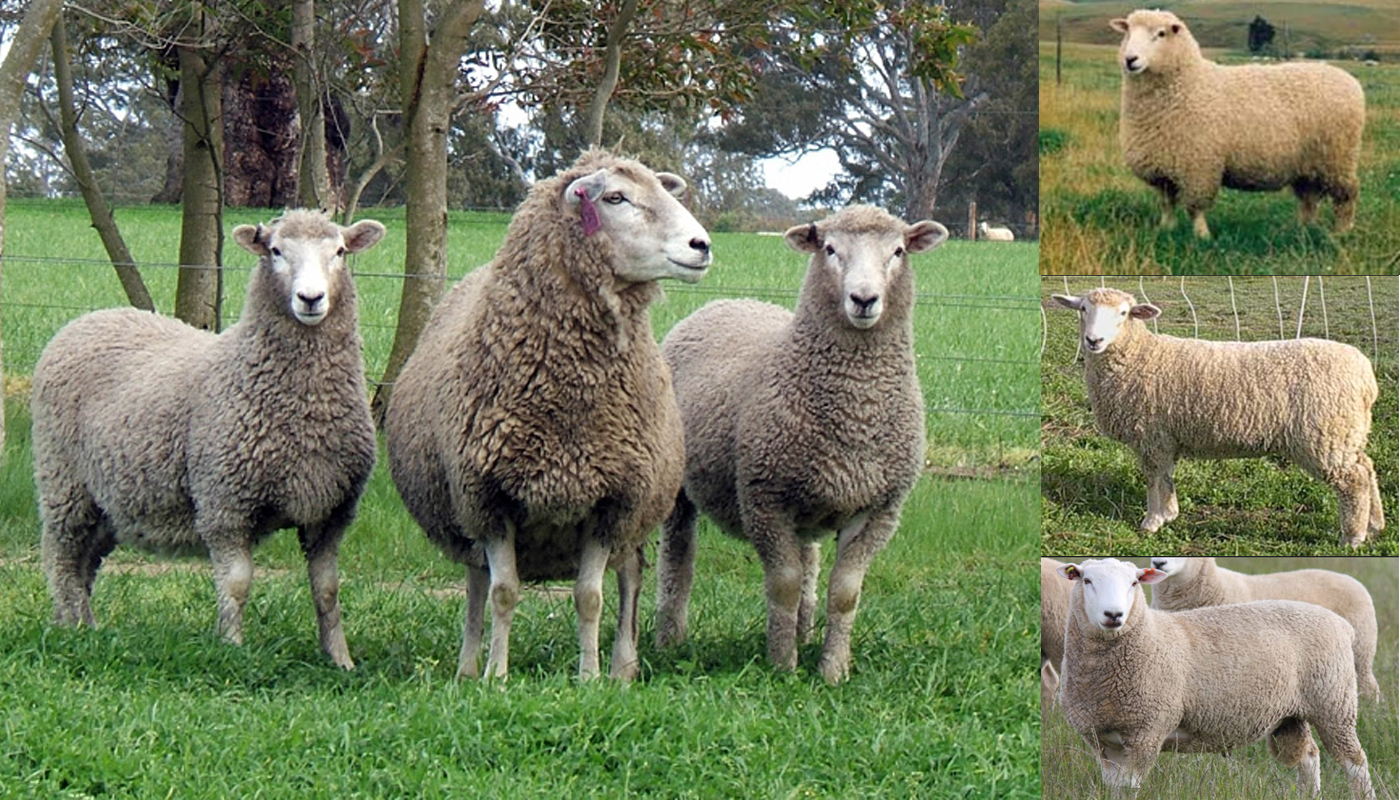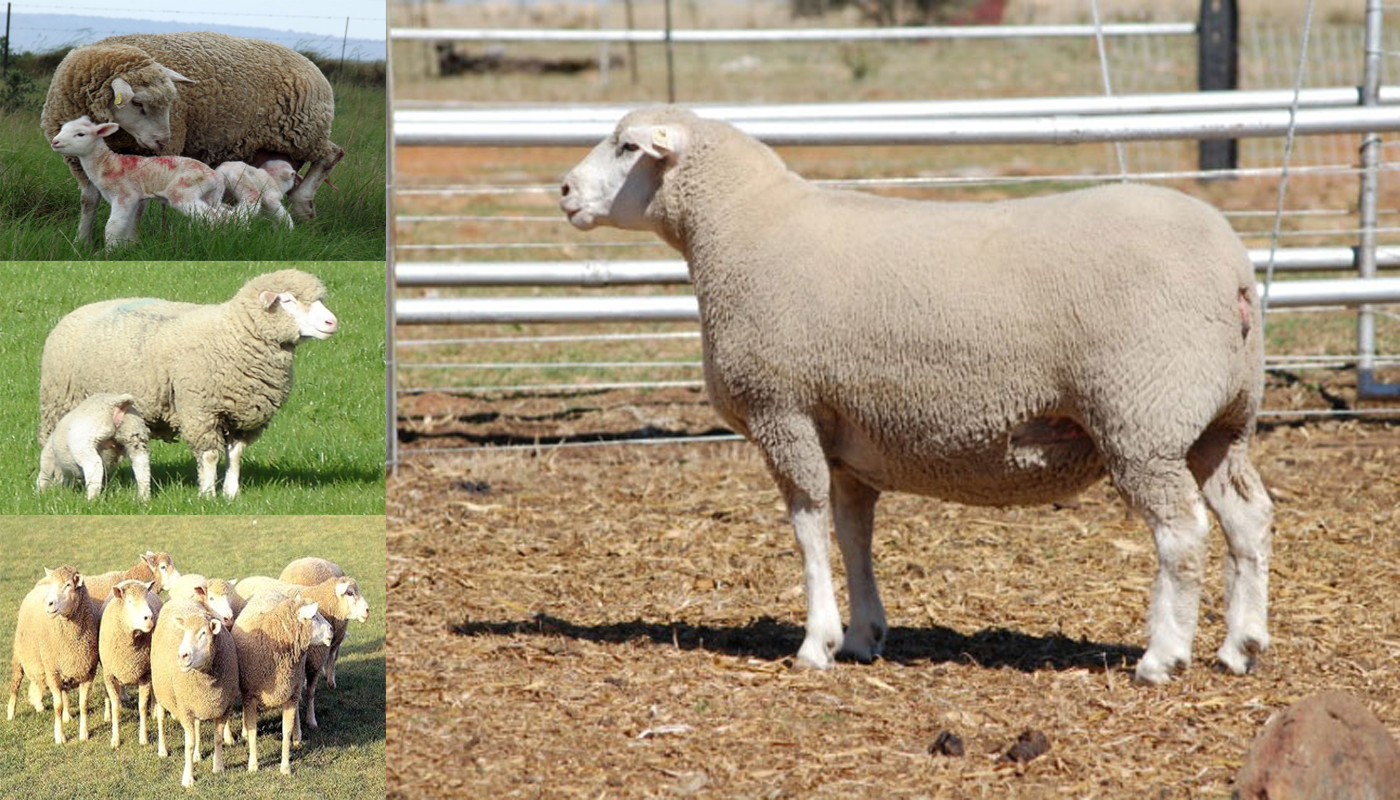
The Norfolk Horn sheep are medium to large breed of sheep with a very powerful long body and sturdy legs. Their temperament have been likened to that of a goats and called flighty as they are quite quick to take flight and can basically jump and spring very well.
They are quite a rare breed these days but are still prized for the meat and for crossing with other breeds.
NORFOLK HORN SHEEP QUICK PROFILE OVERVIEW |
|
|---|---|
| Powerful, strong with a beautiful face framed by a gorgeous set of horns. They have been used in the development of some common sheep breeds. | |
| Country of Origin: | United Kingdom |
| Other Names: | Old Norfolk, Old Norfolk Horned, Blackface Norfolk Horned, Norfolk Horn |
| Breed Size: | Medium to large |
| Main Purpose: | Meat but can be used for wool |
| Can be used for | Breed, **LSC, Meat, Wool |
| Temperament: | Flighty |
| Ideal Climate: | Heat, Cold, Most climates |
| Conservation Status: |
Not listed by the *ALC Status/Rarity: Rare listed on the Rare Breed Survival Trust |
| Health Issues? | No known health issues |
| Good Starter Sheep? | Intermediate to expert farming/keeping level |
| Sheep Associations: | Norfolk Horn Breeders Group |
| Sheep Clubs: | Please refer to Norfolk Horn Breeders Group breeders/members directories for more information |
| Note: *ALC stands for American Livestock Conservancy ** LSC stands for Landscape Management – the animal is used for controlling various vegetation growth |
|
PHYSICAL CHARACTERISTICS |
||||||||||||||||||||||||||||||||
|---|---|---|---|---|---|---|---|---|---|---|---|---|---|---|---|---|---|---|---|---|---|---|---|---|---|---|---|---|---|---|---|---|
| Strong well built, powerful bodies and legs. They have a very evenly spread and proportional body. With a clean face and prominent Roman nosed profile. | ||||||||||||||||||||||||||||||||
| Color(s): | White | |||||||||||||||||||||||||||||||
|
||||||||||||||||||||||||||||||||
EWE BREEDING & MILKING INFORMATION |
|
|---|---|
| The ewes breed once a year and mostly produce enough milk to wean their lambs. They are excellent mothers and are prolific with a lambing percentage of about 170% with few lambing birth difficulties. | |
| Breeding Period/cycle: | Usually lasts 24 to 36 hours |
| Estrous cycle: | Ave. 17 days/13 to 19 days |
| Gestation Period: | Usually, around 150 to 155 days but most gestation is 152 days |
| No. Lambs/Litter: | 1 to 2 with older ewes sometimes able to produce triplets |
| Lactation Period: | Usually, around 150 to 240 day but most are milked for 180 days |
| Milking From: | 4 to 6 weeks after lambing |
| Milk Quality: | Good |
| Milk Ideal for: | Lambs |
| You may Also Like: | 10 Best Sheep Breeds for Milk |
SHEEP MEAT PRODUCTION INFORMATION |
|||||||
|---|---|---|---|---|---|---|---|
| Although a rare breed there is still quite a few of them in numbers. They are still used as a meat sheep with lambs that grow quite quickly and reach a staple weight of around 17 to 18 kgs by 5 months old. The meat is quite lean which allows the lambs to be taken at heavier weights. It is of premium quality with a full flavor and good grain | |||||||
| Meat Production: | Yes, Quality: Excellent | ||||||
|
|||||||
| You may Also Like: | 11 Best Sheep Breeds for Meat Production | ||||||
SHEEP WOOL PRODUCTION INFORMATION |
||||||||||||||||
|---|---|---|---|---|---|---|---|---|---|---|---|---|---|---|---|---|
| Most sheep produce some form or wool. Some breeds are hair sheep and they are not used for their wool whilst other wool sheep have a low quality of wool that would be used for some form of production such as maybe Lanolin, etc. | ||||||||||||||||
| Wool Production? | N/A, Quality: Medium quality with a Bradford count of 54s to 56s | |||||||||||||||
| Wool is used to Produce: | Blankets, weaving, carpets, etc. | |||||||||||||||
|
||||||||||||||||
| You may Also Like: | 18 Best Wool Producing Sheep Breeds | |||||||||||||||
SHEEP SKIN PRODUCTION INFORMATION |
|||||||
|---|---|---|---|---|---|---|---|
| They are not primarily bred for their sheep skin production. Although their skin is or has at some time been used for the production of some form of sheep skin product such as chamois, etc. | |||||||
| Skin Production? | N/A | ||||||
| Skin is used to Produce: | Kid skin leather products such as shoes, car seats, fine leather coats, gloves, etc. Chamois cloths, leather goods such as seats, shoes and other garments and leather materials such as furniture, etc. |
||||||
|
|||||||
GOOD TO KNOW ABOUT THE NORFOLK HORN SHEEP |
|
|---|---|
| A few more interesting facts to know about the breed | |
| Child-Friendly? | No livestock should be left unattended around unsupervised children |
| Landscape Management? | They are good at landscape management |
| Where to buy them? | Please refer to Norfolk Horn Breeders Group breeders/members directories for more information |
GENERAL INFORMATION
The Norfolk Horn ewes were crossed with Southdown rams to produce the popular Suffolk sheep breed.
Norfolk Horn sheep can jump or rather spring much the same goats can and are quite a flighty breed that will jump or attempt to jump to get out of danger.
The Norfolk Horn sheep breed is one of the oldest sheep breeds in Britain.
HISTORY
The Norfolk Horn Breed of sheep is a very old breed of sheep that is one of the oldest in Britain. It is said to be the descendant of the ancient Saxon Black-faced sheep that were once in abundance in Northern Europe.
The breed actually developed in the isolations of East Anglia becoming the most prevalent breed in Suffolk, Norfolk and North Essex. It could also be found in east Cambridgeshire. Its fine fleece was used for centuries in the worsted industry which was what that regions wealth was based upon during the time.
One of the Norfolk horns prime qualities is its incredible foraging abilities which allows it to graze on low grade pastures and maintain conditions. This makes them really well suited to conservation grazing.
USEFUL LINKS
- United States Lamb Resource Center
- American Sheep Industry Association
- American Sheep Industry Association List of Breed Associations & Standards
- American Milk Sheep Association
- Dairy Sheep Association of North America
- American Wool Council
- Fur Commission USA
- North American Meat Institute
- American Lamb Board
- National Lamb Feeders Association
- American Livestock Conservancy
- Animal Shelter (ASPCA)
- American Veterinary Medical Association
- American Animal Welfare Society
- American Animal Control
- American Animal Husbandry Society
- United States Department of Agriculture
 Coopworth Sheep Breed – Everything You Need to Know
Coopworth Sheep Breed – Everything You Need to Know St. Croix Sheep Breed – Everything You Need to Know
St. Croix Sheep Breed – Everything You Need to Know Dorper Sheep Breed – Everything You Need to Know
Dorper Sheep Breed – Everything You Need to Know Romanov Sheep Breed – Everything You Need to Know
Romanov Sheep Breed – Everything You Need to Know Barbados Black Belly Sheep Breed – Everything You Need to Know
Barbados Black Belly Sheep Breed – Everything You Need to Know Scottish Blackface Sheep Breed – Everything You Need to Know
Scottish Blackface Sheep Breed – Everything You Need to Know Merino Sheep Breed – Everything You Need to Know
Merino Sheep Breed – Everything You Need to Know Shropshire Sheep Breed – Everything You Need to Know
Shropshire Sheep Breed – Everything You Need to Know Polypay Sheep Breed – Everything You Need to Know
Polypay Sheep Breed – Everything You Need to Know Lincoln Sheep Breed – Everything You Need to Know
Lincoln Sheep Breed – Everything You Need to Know Ile-de-France Sheep Breed – Everything You Need to Know
Ile-de-France Sheep Breed – Everything You Need to Know Columbia Sheep Breed – Everything You Need to Know
Columbia Sheep Breed – Everything You Need to Know